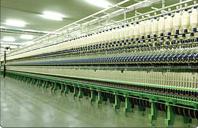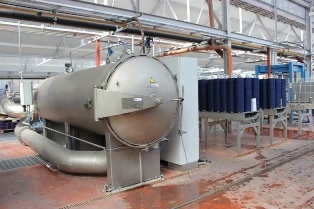|
Tokyo, Japan - Aug 23, 2009 (PRN): According to a report released today by the Japan External Trade Organization (JETRO), Japan's total trade with China (exports and imports combined) fell 21.4% year-on-year to US$102.8 billion in the first half of 2009. This was the first decline (in semi-annual terms) since the second half of 2001. Japan's exports to China dropped by 25.3% to US$46.5 billion, while Japan's imports from China shrank 17.8 % to US$56.2 billion. Overview of Japan-China trade in the first half of 2009 Japan's trade with China posted negative growth (year-on-year) for eight consecutive months, from November 2008 to June 2009. The decline was attributed to China's economic slowdown and a drop in external demand. In the first quarter of 2009, imports and exports were down across the board due to weakened economies in Japan and China, as well as a build-up of inventories in China as external demand fell off. The second quarter, however, saw an increase in exports of some machinery-related products, fueled by increased infrastructure investment in China due to the government's 4-trillion-yuan (approximately 56 trillion yen) economic stimulus package. A recovery was also seen in exports of parts and materials used in production of finished goods for sale in China, reflecting growing demand in the country for home appliances in part due to the government's consumption promotion measures such as the "Home Appliances to the Countryside" subsidy program. In addition, imports of some home appliances and food products showed signs of recovery in the quarter. The drop in Japan's trade with China (with falls in both imports and exports) was smaller than that for the nation's overall trade. As a result, the share of Japan-China trade rose to 20.4% of Japan's total trade, the highest level ever (on a semi-annual basis). Japan's exports to China also set a record (also on a semi-annual basis), making the country Japan's largest export destination and eclipsing the US for the first time. Japan's exports to China in the first half of 2009 Exports of textile machinery and steel, among other items, were down considerably, owing to sluggish growth in China's industrial production caused by a fall in demand from Japan, the US and Europe. Exports of mineral fuels, such as light oil and kerosene (which rose dramatically in 2008), were also down due to a slowing of domestic demand in China for petroleum products. Export growth for organic compounds, such as vinyl chloride and toluene, as well as passenger cars, fell at a slower rate in the first half of 2009. Semiconductors posted an improved one-digit negative growth in June, owing to increased demand for home appliances spurred by the government's stimulus measures. Exports of pumps were robust, reflecting increased investment in infrastructure development and a recovery in demand for new building and housing construction in China. Other gains were seen in agricultural machinery, due to increased demand created by the Chinese government's subsidy program, and in telecommunication equipment and related products, as China works to upgrade its Internet infrastructure. Japan's imports from China in the first half of 2009 In the first quarter of 2009, Japan's real GDP shrunk by 3.1% from the previous quarter. Amid this decline, a significant drop in imports of personal computers and other consumer goods was noted. A fall in Japan's industrial production contributed to a decline in imports of coal (raw materials for steel production), silicon (raw material for silicon wafers used in production of semiconductors), and low-priced universal parts (used in finished goods production in Japan). Imports of foods were also down, but showed signs of recovery (after a sharp decline in 2008), as Japanese consumers and food outlets sought out low-cost food items due to the severe economic situation. This fact also led to an increase (from a year earlier) of imports of (low-cost) clothing items from China. In addition, imports of LCD TVs and some home appliances rose on the back of the Japanese government's introduction of an "eco-points" system, a promotion measure aimed at encouraging consumers to buy environmentally-friendly versions of such products. |
|
Japan-China Trade Slips in the First Half of 2009
Updated: 2009-8-28 Source: english.ctei.gov.cn

Recommended News
Photo Gallery
Most Popular



